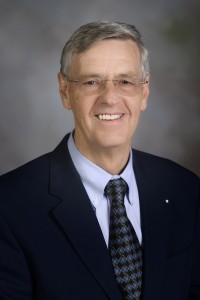
Clifford W. Randall
Ph.D., The University of Texas, 1966
M.S., University of Kentucky, 1963
B.S., University of Kentucky, 1959
Inducted, 2020
Clifford Randall is the Charles P. Lunsford Professor Emeritus of Civil and Environmental Engineering at Virginia Tech. He joined the Virginia Tech faculty in 1968 to help develop the environmental engineering and science program. For more than four decades, he kept a rigorous schedule, teaching generations of environmental engineers, including 96 M.S. and 37 Ph.D. students, while serving in many professional organizations and consulting with wastewater treatment facilities around the world.
Born in Somerset, Kentucky, Randall earned his B.S. in civil engineering and his M.S. in civil engineering at the University of Kentucky in 1959 and 1963, respectively. He earned his Ph.D. in environmental health engineering at The University of Texas at Austin in 1966.
Randall’s teaching career began at The University of Texas at Austin in 1965. Three years later, he moved east to join the environmental engineering faculty of the Virginia Polytechnic Institute, where he served as chair of the Environmental Engineering and Sciences programs from 1979-96 and as a professor until 2001, when he attained emeritus status.
From 1972 to 2015, Randall served as founder and director of the Occoquan Watershed Monitoring Laboratory in the National Capital Region, which pioneered suburban and urban non-point pollution research and control, watershed-wide water quality monitoring linked to reservoir water quality responses and evaluation of atmospheric pollutant deposition. With strong expertise in biological nutrient removal, industrial wastewater treatment and water pollution control, he has been involved in the evaluation and design of hundreds of wastewater facilities to reduce nutrient discharge without incurring major increases in operation costs.
Randall introduced biological nutrient removal to the Chesapeake Bay Watershed in 1984 and worked with the Hampton Roads Sanitation District to develop the public domain patented VIP process for nutrient removal. His efforts have not only led to the modification and operation of many treatment plants in the Chesapeake Bay area but also provided cost-effective solutions to improve the performance of treatment facilities in foreign countries, such as South Africa, India, China, Canada and South Korea.







